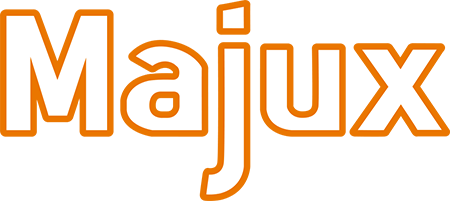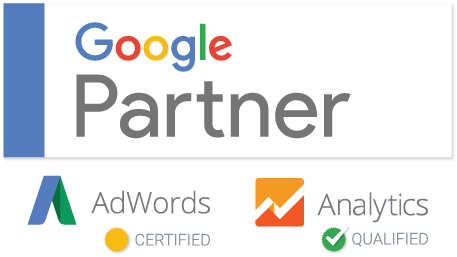Acronyms like SEO, SEM, and SMM are common in the digital marketing world, but their meanings and purposes can be confusing to newcomers. All of these acronyms stand for concepts that are useful for gaining more website traffic through the use of digital marketing, so it’s important to understand what they mean and how you can use them for your business. At t he very least, it will help you keep up in a meeting. In this article, we’ll demystify these terms and explore their roles in the digital marketing landscape.
SEO – Search Engine Optimization
Search Engine Optimization (SEO) is a multifaceted strategy aimed at improving a website’s visibility in organic search engine results, primarily on platforms like Google. While the core concept remains the same, SEO has evolved significantly over the past two decades. To get a website to appear higher in search results, SEO professionals make sure that websites are aligned with the ranking algorithms of search engines.
The Evolution of SEO
In the early days of the internet, SEO mainly involved keyword stuffing – repeatedly incorporating keywords into content to manipulate rankings. However, Google’s algorithm advancements emphasized the importance of quality and relevance over keyword density.
Modern SEO
Today, SEO is centered around the overlap of delivering value to both search engines and users. This involves:
Making Your Site Easily Crawled and Understood:
- Creating and submitting sitemaps to Google.
- Using title tags and header tags (H1-6) effectively to enhance content readability.
- Internal linking to highlight the importance of specific articles or pages.
Satisfying People’s Intent/Issue:
- Focusing on content that addresses users’ queries and issues.
- Google gauges a website’s effectiveness by analyzing user interactions and the relevance of its content.
Serving as an Authoritative Source:
- Generating unique, valuable content that other websites want to reference.
- Building relationships within your industry or community to earn natural backlinks.
SEM – Search Engine Marketing
Search Engine Marketing (SEM) encompasses both SEO and PPC advertising (Pay-Per-Click). While SEO targets organic search results, PPC advertising involves paid ads that appear prominently at the top of search results in Google and Bing and as well as display ads that appear within or as pop-ups on web pages.
PPC Advertising
A comprehensive guide to PPC advertising delves into the best practices for this paid channel. PPC allows businesses to bid for ad placement on search engine results pages, offering immediate visibility to potential customers. Effective keyword research and ad campaign management are pivotal for success in PPC advertising.
SMM – Social Media Marketing
Social Media Marketing (SMM), as the name suggests, revolves around utilizing social media platforms for marketing purposes. This branch of digital marketing includes both paid and organic efforts on platforms like Facebook, Twitter, and Instagram.
Facebook/Instagram and TikTok Advertising
SMM used to encompass a broader spectrum of more content-related activities until around 2016 when it transitioned into what is now separated into what you think of as boosted video or image posts that appear on the main social media platforms. Guerilla social media marketing still exists, but that is considered a different strategy in acronym/name.
Influencer Marketing
A substantial portion of influencer marketing occurs on social media platforms. Brands collaborate with influencers, such as celebrities or industry experts, to promote their products or services. While often considered a subset of social media marketing, influencer marketing has grown into a distinct and influential segment of digital marketing.
Which Strategy is Best?
When it comes to deciding between SEO, SEM, and SMM, you must consider your goals, budget, and audience:
Know Your Audience:
Understand where your target audience spends their time online. SEO captures those searching for information on a search engine, SEM includes targeting on third-party websites, while SMM engages users on social platforms.
Timeline vs. Budget
Are you looking for longer-term results (SEO), immediate visibility (SEM), or social media engagement (SMM)? When done well, SEO offers the most long-lasting and stable lead source. It is more of an investment than paid channels because it builds upon itself. The pay-per-click components of SEM yield immediate eyeballs and can be used as a stop-gap while longer-term strategies such as content get off the ground. SMM is also a longer-term play and more akin to brand-building and/or name recognition efforts, with the added complexity of audience exhaustion.
Consider Your Budget:
Determine how much you’re willing to invest. The order of cost often goes SEM > SEO > SMM (although when factoring in the human cost of SMM, the cost can have a wide range)
Evaluate the Competition:
Knowing where your competition is visible and getting customers is crucial to your decision to either take market share or target their gaps.
In conclusion, understanding the distinctions between SEO, SEM, and SMM is crucial for crafting a comprehensive digital marketing strategy. Each of these components plays a unique role in enhancing online visibility, attracting potential customers, and achieving business goals. By staying informed about the evolving landscape of digital marketing, businesses can adapt and thrive in the ever-changing online world.
If you own a law firm and would like to know how we can apply what we know about SEO for lawyers to start attracting clients from the web, give us a call.





